Essential Tips for Cutting and Drilling Lexan

When it comes to cutting and drilling Lexan, it’s important to follow some essential tips to ensure successful results. Lexan, a brand of polycarbonate, is a versatile and durable material commonly used in various applications, including windows, signs, and protective covers. However, its strength and toughness can pose challenges when it comes to cutting and drilling. By following these tips, you can achieve clean and precise cuts and holes in Lexan without compromising its integrity.
1. Choose the right tool: When cutting Lexan, it’s crucial to use the right tool for the job. A fine-toothed circular saw, table saw, or jigsaw with a blade specifically designed for cutting plastics is recommended. Avoid using a regular wood-cutting blade as it may cause melting and chipping.
2. Mark your cut or hole: Before making any cuts or holes in Lexan, it’s important to measure and mark the desired dimensions accurately. Use a fine-tipped marker or a scoring tool to create a visible guideline that you can follow during the cutting or drilling process.
3. Take it slow: To prevent cracking or splintering, it’s essential to cut or drill Lexan at a slow and steady pace. Applying excessive pressure or going too fast can generate heat, causing the Lexan to melt or warp. Take your time and let the tool do the work to achieve clean and precise results.
4. Use appropriate clamping: When cutting or drilling Lexan, it’s crucial to secure the material firmly in place. Using clamps or a vise will prevent it from moving or vibrating during the cutting or drilling process, ensuring more accurate results. It’s important to distribute the pressure evenly to avoid stress points that could cause cracking.
5. Minimize friction and heat: Cooling the tool and reducing friction is important when cutting or drilling Lexan. Applying a lubricant, such as a mild soap and water solution, to the cutting area can help reduce heat and friction. Additionally, using a proper blade, drill bit, or cutting tool with teeth designed for plastics can minimize heat buildup and prevent melting.
Preparing to Cut and Drill Lexan
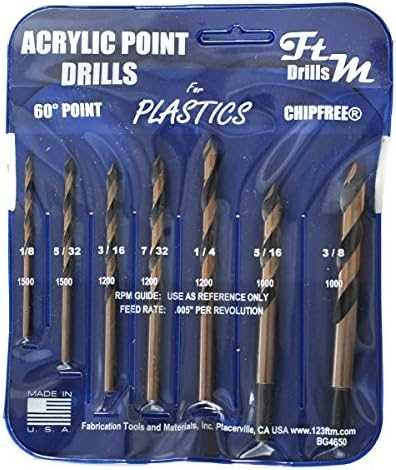
Gather the necessary tools and materials
Before you start cutting and drilling Lexan, it is important to gather all the necessary tools and materials to ensure a smooth process. Here are some items you will need:
- Lexan sheet
- Measuring tape or ruler
- Marker or pencil
- Clamps
- Drill
- Drill bits
- Jigsaw or circular saw
- Safety glasses
- Dust mask
Measure and mark the Lexan sheet
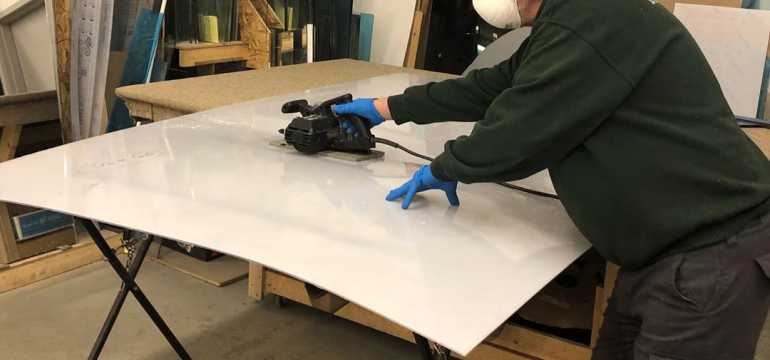
Using a measuring tape or ruler, carefully measure and mark the precise dimensions on the Lexan sheet that you want to cut. Make sure to double-check your measurements to avoid any mistakes. Use a marker or pencil to make clear and visible marks on the surface of the Lexan.
Secure the Lexan sheet
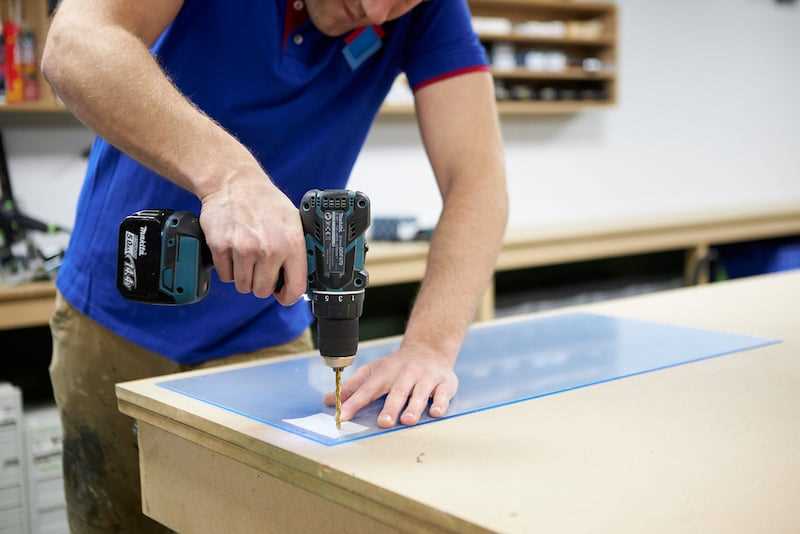
Place the Lexan sheet on a stable work surface and use clamps to secure it in place. This will prevent the sheet from moving or shifting during the cutting and drilling process, ensuring more accurate results.
Choose the appropriate drill bit
Depending on the size and type of hole you need to make in the Lexan sheet, choose the appropriate drill bit. Make sure the drill bit is specifically designed for cutting through plastic materials like Lexan to avoid any damage to the sheet.
Wear protective gear
Whenever working with Lexan or any other materials, it is essential to wear the appropriate protective gear. Put on safety glasses to protect your eyes from flying debris and dust. Additionally, wearing a dust mask can help prevent the inhalation of any potentially harmful particles.
Follow proper cutting and drilling techniques
When cutting or drilling Lexan, it is important to follow the proper techniques to ensure clean and precise cuts. Start by drilling a small pilot hole before cutting larger holes or shapes. This will help prevent the Lexan sheet from cracking or splintering. When using a jigsaw or circular saw, move slowly and smoothly through the material, applying steady and even pressure.
Clean up the work area
After you have finished cutting and drilling the Lexan sheet, take the time to clean up your work area. Dispose of any waste materials, such as broken pieces of Lexan or wood shavings, and store your tools properly. This will help maintain a safe and organized workspace for future projects.
Choosing the Right Tools for the Job
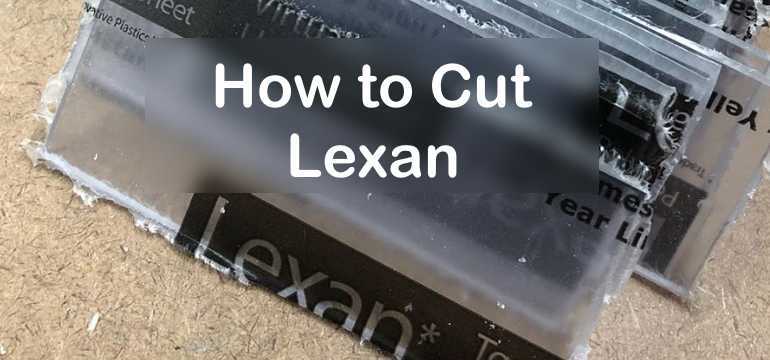
When it comes to cutting and drilling Lexan, choosing the right tools is crucial for achieving clean, precise, and professional results. The following are some essential tools you will need for working with Lexan:
Cutting Tools
- Utility Knife: A sharp utility knife with a retractable blade is ideal for straight cuts on thinner Lexan sheets. Make sure to use a fresh blade to ensure clean cuts.
- Circular Saw: For cutting thicker Lexan sheets or making long straight cuts, a circular saw with a fine-toothed carbide blade is recommended. This will help prevent chipping and cracking.
- Jigsaw: A jigsaw fitted with a fine-toothed blade designed for cutting plastics is perfect for making intricate curved cuts or cutting holes in Lexan sheets. Take your time and use a slow cutting speed to minimize heat buildup.
Drilling Tools
- Drill: A variable-speed drill with a sharp drill bit specifically designed for plastic is essential for drilling holes in Lexan. Avoid using high speeds and excessive pressure to prevent cracking or melting.
- Step Drill Bit: For larger holes, a step drill bit can be useful as it allows you to create different hole sizes with a single bit. This is especially handy when working with Lexan for DIY projects.
Additional Tools and Safety Equipment
- Measuring Tape: Accurate measurements are crucial for getting the right cuts. Use a measuring tape to ensure precise dimensions.
- Safety Glasses: Always wear safety glasses to protect your eyes from flying debris during cutting and drilling.
- Clamps: Use clamps to secure the Lexan sheet firmly in place before cutting or drilling to prevent it from shifting.
- Sanding Block: A sanding block or fine-grit sandpaper can be used to smooth the edges of the Lexan after cutting.
- Protective Gloves: Depending on the project, protective gloves can be worn to protect your hands from sharp edges or to minimize contact with any chemicals used during the process.
To ensure successful cuts and drills, always read the manufacturer’s instructions for both the Lexan material and the specific tools you plan to use. With the right tools and safety precautions, you can achieve clean and precise results when cutting and drilling Lexan.
Measuring and Marking the Lexan
Before cutting or drilling Lexan, it is important to measure and mark the material accurately for precise and clean cuts. Here are some essential tips for measuring and marking Lexan:
1. Use a measuring tape
Start by using a measuring tape to determine the dimensions of the area you need to cut or drill. Measure the length and width, and write down these measurements for reference.
2. Use a straight edge
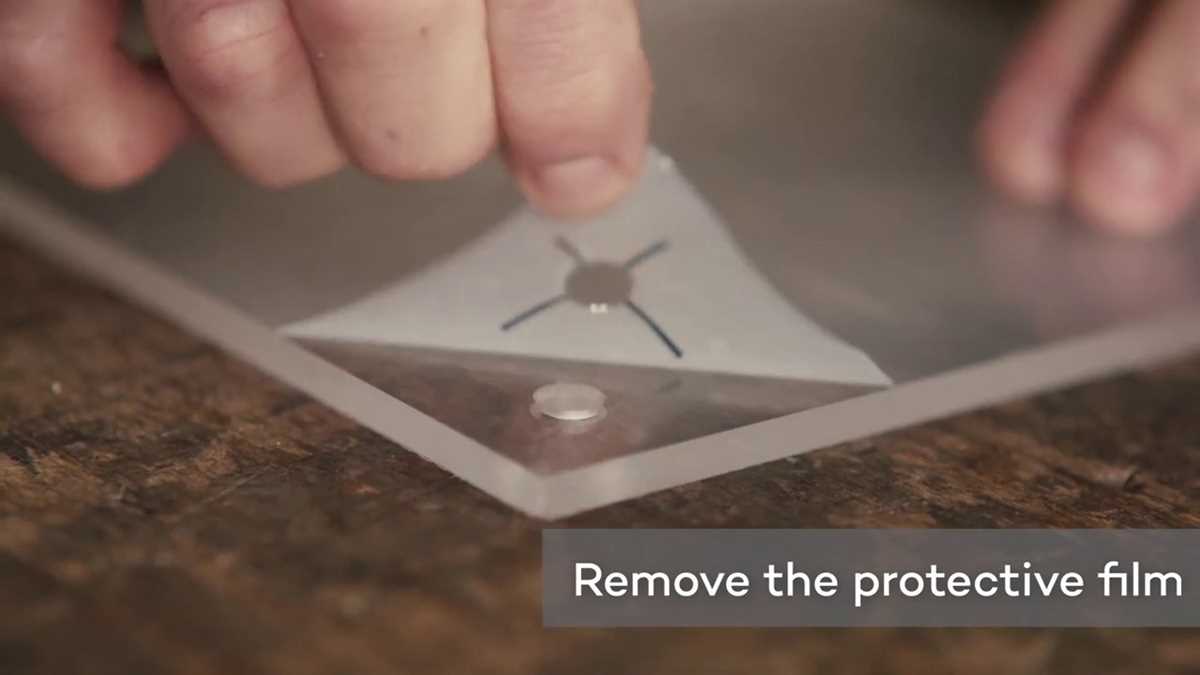
Next, use a straight edge such as a ruler or a T-square to mark straight lines on the Lexan. Align the straight edge with the measurements you took and draw a line across the sheet.
3. Use a marker or pencil
To mark the measurements on the Lexan, use a permanent marker or a pencil. Make sure to use a color that is easily visible on the Lexan sheet.
4. Use masking tape
If you need to make multiple cuts or drill holes at specific locations, you can use masking tape to mark these positions. Apply a piece of masking tape to the Lexan and mark the desired location on the tape.
5. Double-check the measurements
Before making any cuts or drilling, double-check the measurements and markings on the Lexan to ensure accuracy. It is better to spend a little extra time on measuring and marking accurately than to end up with a mistake.
6. Use a center punch
If you are drilling holes in the Lexan, it is helpful to use a center punch to create a small indentation at the center of the marked hole. This will help prevent the drill bit from slipping and ensure a more accurate hole.
7. Consider using a template
If you need to make multiple cuts or drill multiple holes with the same measurements, consider creating a template out of a sturdy material such as cardboard or plywood. This will help maintain consistency and accuracy throughout the cutting or drilling process.
By following these tips for measuring and marking Lexan, you can ensure precise and clean cuts, making your project a success.
Protecting Yourself and the Work Area
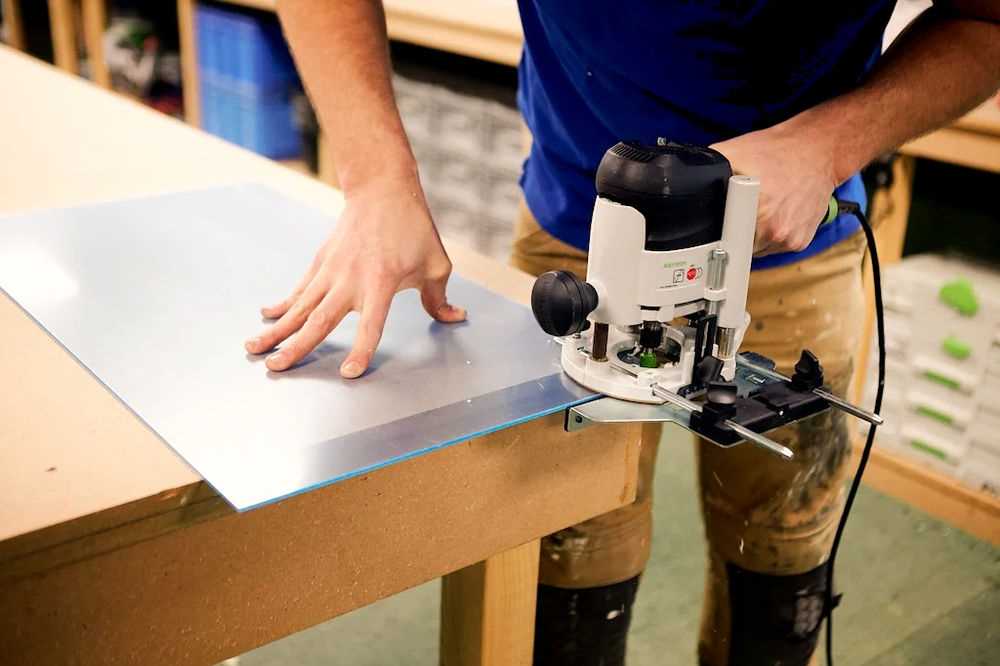
When working with Lexan, it is important to take precautions to protect yourself and the work area. Here are some essential tips:
1. Wear Personal Protective Equipment (PPE)
Wear safety goggles to protect your eyes from flying debris and fine particles. It is also a good idea to wear a dust mask to prevent inhalation of dust and fumes.
2. Clear the Work Area
Before you begin cutting or drilling Lexan, make sure the work area is clear of any clutter. Remove any objects that may obstruct your movement or interfere with your tools.
3. Use Clamps or Vises
Secure the Lexan sheet firmly in place using clamps or vices. This will prevent the material from moving or vibrating during cutting or drilling, ensuring cleaner and more precise cuts.
4. Create a Cutting or Drilling Guide
If you need to make precise cuts or holes in the Lexan, consider creating a cutting or drilling guide. This can be a simple template made from a thicker piece of Lexan or another material, which will help you maintain accuracy and consistency.
5. Use the Right Tools
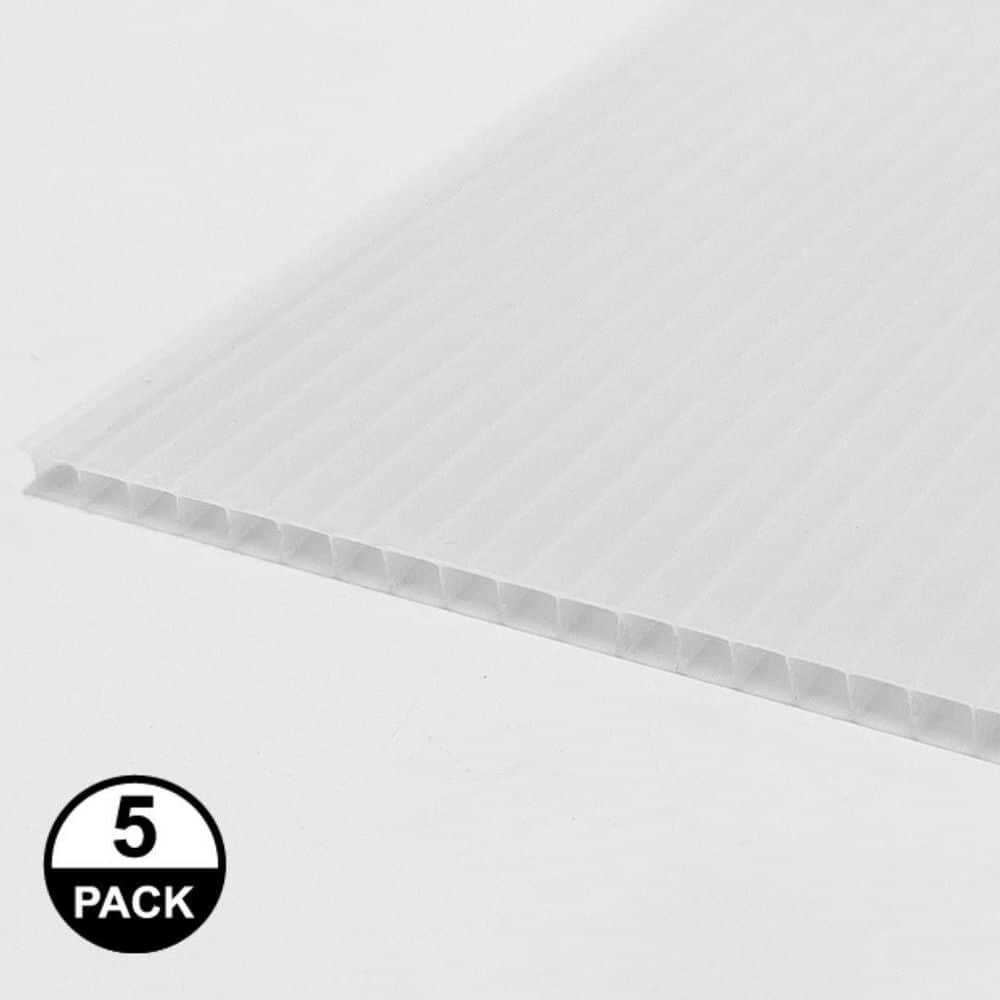
Make sure you are using the appropriate tools for cutting or drilling Lexan. Avoid using saw blades or drill bits that are designed for other materials, as they may cause the Lexan to crack or shatter.
6. Maintain a Controlled Speed
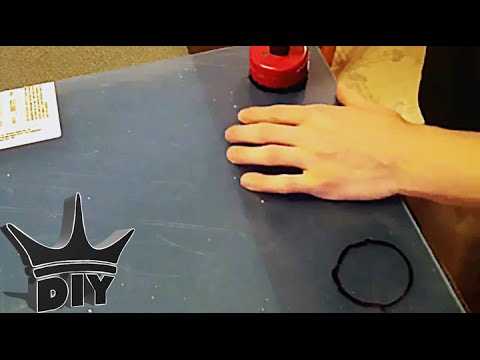
When cutting or drilling Lexan, maintain a controlled speed to prevent overheating. Going too fast can generate excessive heat, which can cause the Lexan to melt or warp.
7. Keep a Fire Extinguisher Handy
Accidents happen, so it is always a good idea to have a fire extinguisher nearby when working with Lexan. In case of any unexpected fire, you can quickly put it out and mitigate any potential damage.
8. Clean Up Properly
After you have finished cutting or drilling Lexan, clean up any debris or dust from the work area. Dispose of the waste material responsibly and ensure that the work area is safe and tidy.
By following these tips, you can protect yourself and the work area when cutting and drilling Lexan. Remember to always prioritize safety and take the necessary precautions to prevent accidents or injuries.
Cutting Lexan Safely and Efficiently
1. Choose the Right Tools
When cutting Lexan, it is important to use the right tools for the job. A sharp utility knife or a fine-toothed saw is the best choice. Avoid using power tools such as circular saws or jigsaws, as they can generate too much heat and cause the Lexan to crack or melt.
2. Measure and Mark
Before cutting the Lexan, measure and mark the area you want to cut. Use a straight edge and a permanent marker to ensure that your cut will be accurate.
3. Support the Lexan
To prevent the Lexan from cracking or breaking during the cutting process, it is important to support it properly. Place the Lexan on a flat surface, such as a workbench or sawhorses, and secure it in place with clamps or weights.
4. Slow and Steady
When cutting Lexan, it is important to take your time and go slow and steady. Apply gentle pressure and let the tool do the work. Rushing the process can cause the Lexan to crack or splinter.
5. Use Lubrication
For smoother and cleaner cuts, it is recommended to use a lubricant while cutting Lexan. Apply a small amount of mild detergent or water to the blade or saw before cutting. This will help reduce friction and prevent the Lexan from melting or sticking to the blade.
6. Clean the Edges
After cutting the Lexan, make sure to clean the edges with a soft cloth or sandpaper. This will remove any burrs or rough edges and give your cut a clean and polished finish.
7. Safety Precautions
Always wear safety goggles and gloves when cutting Lexan to protect yourself from flying debris. Make sure to work in a well-ventilated area to avoid inhaling any fumes or dust particles.
8. Practice on Scrap Pieces
If you are new to cutting Lexan, it is a good idea to practice on scrap pieces before working on your final project. This will help you get a feel for the material and perfect your cutting technique.
9. Store Properly
When not in use, store your Lexan sheets in a cool and dry place to prevent warping or bending. Avoid exposing them to direct sunlight or extreme temperatures.
By following these tips, you can cut Lexan safely and efficiently, ensuring clean and precise cuts every time.
Drilling Holes in Lexan
When it comes to drilling holes in Lexan, there are a few important things to keep in mind to ensure a clean and precise result. Follow these tips to get the job done right:
- Choose the right drill bit: It’s important to select a drill bit specifically designed for use with plastics like Lexan. Avoid using regular drill bits, as they can cause the material to crack or chip. A carbide or high-speed steel (HSS) drill bit with a sharp point is ideal.
- Secure the Lexan: Before drilling, make sure the Lexan is firmly secured in place. You can use clamps or a vise to hold it steady. This will prevent the material from moving or vibrating while you drill, which can lead to inaccurate holes or damage to the Lexan.
- Use low speed and light pressure: When drilling Lexan, it’s important to use a low drill speed and apply gentle pressure. High speeds and excessive force can generate heat, which can melt or deform the material. Start drilling at a slow speed and gradually increase if needed.
- Use lubrication: Applying a small amount of lubricant or cutting fluid to the drill bit can help reduce friction and heat generation. This will help prevent the Lexan from melting or warping during the drilling process.
- Drill in steps: For larger holes, it’s best to drill in multiple steps. Start with a smaller drill bit and gradually increase the size until you reach the desired diameter. This will help prevent the Lexan from cracking or splintering.
- Clear away debris: As you drill, make sure to clear away the debris from the hole regularly. This will help prevent the drill bit from getting clogged and ensure a clean and accurate hole.
By following these tips and taking your time, you can successfully drill holes in Lexan without damaging the material and achieve professional-looking results.
Preventing Cracking and Shattering
1. Use the Right Tools
Using the right tools is essential to prevent cracking and shattering when cutting or drilling Lexan. Make sure to use a sharp blade or drill bit that is specifically designed for use with polycarbonate materials. Dull or improper tools can apply too much pressure and cause the Lexan to crack or shatter.
2. Lubricate the Blade or Drill Bit
Applying a lubricant to the blade or drill bit can help reduce friction and prevent the Lexan from cracking. You can use a specialized cutting oil or even a bar of soap as a lubricant. Apply the lubricant directly to the blade or drill bit before starting the cutting or drilling process.
3. Control the Pressure

When cutting or drilling Lexan, it is important to have control over the pressure applied. Too much pressure can cause the material to crack or shatter. Apply gentle and steady pressure, allowing the blade or drill bit to do the work. Avoid any sudden or excessive force that could lead to damage.
4. Secure the Lexan Properly
Properly securing the Lexan can help prevent cracking and shattering. Make sure to use clamps or other securing methods to firmly hold the material in place. This will help stabilize the Lexan and reduce the chances of it flexing or moving during the cutting or drilling process.
5. Work in a Controlled Environment
The environment in which you work can also impact the integrity of the Lexan. Make sure to work in a clean and controlled environment to minimize the risk of debris or foreign objects interfering with the cutting or drilling process. Dust or debris can cause the blade or drill bit to deviate and potentially crack the Lexan.
6. Take Breaks and Use Cooling Methods
Long periods of continuous cutting or drilling can generate heat, which can weaken the Lexan and increase the risk of cracking or shattering. To prevent this, take breaks during the process to allow the Lexan to cool down. Additionally, you can use cooling methods such as air or water to keep the temperature of the Lexan within a safe range.
7. Practice with Scrap Pieces
If you’re new to working with Lexan, it may be helpful to practice cutting and drilling on scrap pieces before working on the final product. This will allow you to familiarize yourself with the material and the cutting or drilling techniques without the risk of damaging the actual piece.
8. Wear Appropriate Safety Gear
When working with Lexan, it is important to prioritize safety. Wear appropriate safety gear such as safety goggles, gloves, and a face mask to protect yourself from potential flying debris or shards in case of accidental cracking or shattering.
Finishing and Cleaning the Cut or Drilled Area
After cutting or drilling Lexan, it’s important to properly finish and clean the cut or drilled area to ensure a smooth and professional-looking result. Here are some essential tips to follow:
- Remove any burrs or rough edges: Use a fine-grit sandpaper or a deburring tool to gently smooth out any rough edges or burrs left by the cutting or drilling process. This will help prevent injury and create a cleaner finish.
- Clean the area: Use a mild soap or detergent and water solution to clean the cut or drilled area. This will remove any debris, dust, or lubricant that may have accumulated during the cutting or drilling process.
- Dry the area: After cleaning, make sure to thoroughly dry the cut or drilled area. This will prevent water spots or streaks from forming when the surface dries naturally.
- Apply a protective coating: Consider applying a protective coating or sealant to the cut or drilled area. This can help enhance the durability and longevity of the Lexan and provide added protection against scratches or UV damage.
- Inspect the area: Once the finish has dried, carefully inspect the cut or drilled area for any imperfections or rough spots. If necessary, repeat the sanding, cleaning, and coating process until you achieve the desired result.
By following these tips, you can ensure that your cut or drilled Lexan surfaces look clean, professional, and free from any rough edges or blemishes.
FAQ:
What is Lexan?
Lexan is a type of transparent polycarbonate sheet that is known for its durability and impact resistance.
What tools do I need for cutting Lexan?
For cutting Lexan, you will need a sharp utility knife, a circular saw with a fine-toothed blade, or a jigsaw with a fine-toothed blade.
Can I use a regular drill for drilling Lexan?
No, you should not use a regular drill for drilling Lexan. It is recommended to use a drill or a drill press with a low speed setting and a drill bit specifically designed for drilling plastic materials.
What precautions should I take when cutting Lexan?
When cutting Lexan, you should wear safety goggles and gloves to protect yourself from flying debris. It is also advisable to secure the Lexan sheet firmly and use clamps to prevent it from moving during cutting.
What is the best way to drill holes in Lexan?
The best way to drill holes in Lexan is to start with a small pilot hole to guide the drill bit, and then gradually increase the hole size using larger drill bits. It is important to use a slow speed and gentle pressure to avoid cracking or chipping the Lexan sheet.
Can I cut complex shapes in Lexan?
Yes, you can cut complex shapes in Lexan. To do this, you can use a jigsaw with a fine-toothed blade and follow the desired shape carefully. It is recommended to go at a slow speed and use steady and smooth movements to achieve the best results.
Video:


![The Ultimate Lapidary Bible: [4 in 1] Mastering Techniques, Essential Tools, and Proven Tips for Cutting, Polishing, and Faceting Exquisite Gemstones From BEGINNER to Advanced](https://m.media-amazon.com/images/I/41NYp+608HL._SL160_.jpg)







